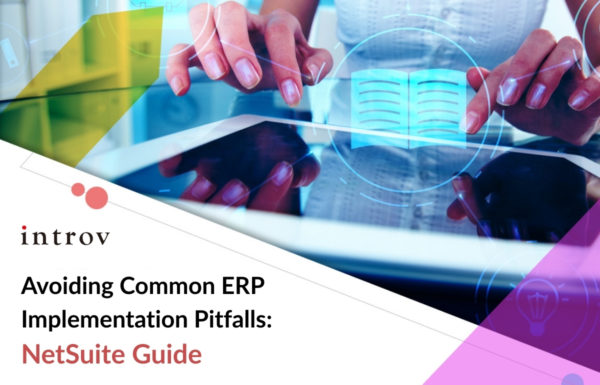In today’s uncertain economic environment, effective budgeting and planning have become more crucial than ever, especially for Small and Medium-sized Enterprises (SMEs). Navigating financial complexities can be daunting, but with NetSuite’s Planning and Budgeting tools, your finance team can streamline processes, enhance productivity, and mitigate risks. Here’s how you can leverage this powerful platform to its fullest potential.
1. Embrace Scenario Planning
One of the standout features of NetSuite Planning and Budgeting is its robust scenario planning capabilities. By creating multiple scenarios, your team can anticipate different financial outcomes and prepare accordingly. This is particularly useful in volatile markets where flexibility and foresight are critical. With the ability to model various scenarios—best-case, worst-case, and most likely—you can develop strategies that are both robust and adaptable. This proactive approach helps you identify potential risks and opportunities, allowing you to make informed decisions that minimize exposure to financial uncertainties.
Example: An SME in the retail sector can use scenario planning to prepare for seasonal fluctuations. By creating scenarios such as a surge in demand during the holiday season or a dip during off-peak months, the company can adjust its inventory and staffing levels accordingly, reducing the risk of overstocking or understocking.
2. Make the Most of Budgeting and Forecasting
Effective budgeting and forecasting are the cornerstones of sound financial management. NetSuite allows you to create detailed budgets and forecasts based on historical data and predictive analytics. This ensures that your financial plans are grounded in reality and can adapt to changing circumstances. The platform’s automated data integration reduces manual errors and increases accuracy, allowing for more reliable forecasts. Regular updates to your forecasts reflect new data and insights, keeping your financial strategy aligned with your actual performance and helping you anticipate risks before they become critical.
Example: A manufacturing SME can use NetSuite to forecast raw material costs based on historical price trends and market predictions. If the forecast indicates a potential increase in material costs, the company can negotiate long-term contracts with suppliers to lock in current prices and avoid unexpected expenses.
3. Optimize Revenue and Expense Planning
NetSuite’s revenue and expense planning features provide a granular understanding of your financial inflows and outflows. This is essential for identifying areas where you can cut costs or increase revenue, thereby reducing financial risk. By closely monitoring these metrics, your team can make informed decisions that improve profitability. The platform’s integrated planning approach ensures all financial data is synchronized, providing a single source of truth for revenue and expense management. Regular review cycles allow you to assess your revenue streams and expenses, ensuring that your financial plans remain accurate, actionable, and risk-averse.
Example: A tech startup can use NetSuite to track its subscription revenue and operational expenses. By analyzing this data, the company can identify high-cost areas, such as software licenses, and negotiate better rates or seek alternative solutions, thereby improving profitability.
4. Leverage Workforce Planning and Demand Forecasting
Your workforce is one of your most significant assets, and effective workforce planning is crucial for maintaining operational efficiency and managing labor costs. NetSuite allows you to align your staffing needs with your financial goals, ensuring that you have the right people in the right roles at the right time. Use workforce planning to anticipate hiring needs, manage labor costs, and ensure that your team is equipped to meet future challenges. Additionally, NetSuite’s demand forecasting capabilities help businesses make smarter buying and stocking decisions, optimizing inventory levels and reducing waste, which in turn minimizes financial risk associated with overstocking or stockouts.
Example: A hospitality business can use workforce planning to manage seasonal staffing requirements. By forecasting demand during peak tourist seasons, the company can hire temporary staff to handle increased workloads, ensuring that service quality remains high without incurring unnecessary labor costs during off-peak periods.
5. Automate Financial Processes
NetSuite Planning and Budgeting automates several key financial processes, including data consolidation, troubleshooting, and report generation. This automation reduces the reliance on manual tasks, minimizing errors, and freeing up your team’s time for more strategic activities. By streamlining these processes, you can enhance collaboration across departments, improve accuracy in your financial planning, and reduce the dependency on IT support. Automation also helps in maintaining compliance with financial regulations, thereby avoiding legal risks.
Example: An e-commerce company can automate its monthly financial reporting process using NetSuite. This ensures that all sales data, expenses, and inventory levels are automatically consolidated into comprehensive reports, reducing the risk of manual errors and ensuring timely and accurate financial statements.
6. Analyze and Improve
Continuous improvement is key to financial success. NetSuite provides robust tools for analyzing past financial statements, cash flow, and profitability. Use these insights to identify areas for improvement and adjust your budgeting requirements accordingly. Advanced analytics and real-time reporting capabilities allow you to spot trends, uncover inefficiencies, and make data-driven decisions that enhance your financial health. Regular financial analysis will help you keep your strategies aligned with your business objectives and mitigate potential financial risks.
Example: A healthcare SME can analyze past financial performance to identify trends in patient billing and insurance reimbursements. By understanding these patterns, the organization can improve its billing processes, reduce payment delays, and enhance cash flow management.
7. Utilize Data Synchronization and Dashboards
NetSuite’s data synchronization capabilities ensure that your financial data is always up-to-date and accurate. This is complemented by intuitive dashboards that provide real-time insights into your financial performance. Use these tools to stay informed and make timely decisions. The platform’s seamless integration with other business applications, including Microsoft Office, further enhances your ability to analyze and present data effectively. Customizable dashboards allow you to track key performance indicators (KPIs) and other critical metrics at a glance, providing a clear view of potential risks and opportunities.
Example: A logistics company can use NetSuite’s dashboards to monitor KPIs such as delivery times, fuel costs, and vehicle maintenance expenses. Real-time data synchronization ensures that the company can quickly identify and address any issues, such as rising fuel costs, by optimizing delivery routes or negotiating better rates with fuel suppliers.
In conclusion, leveraging NetSuite Planning and Budgeting can significantly enhance your financial management capabilities while helping you mitigate risks. By embracing scenario planning, optimizing budgeting and forecasting, and streamlining revenue and expense planning, your SME can navigate the financial complexities of today’s market with greater confidence. Additionally, workforce planning and demand forecasting ensure operational efficiency, while automation of financial processes reduces manual errors and boosts productivity. Continuous analysis and the use of real-time dashboards provide valuable insights to drive informed decision-making. By fully utilizing NetSuite’s comprehensive suite of tools, your finance team can achieve a higher level of precision, adaptability, and strategic foresight, paving the way for sustained financial success.









